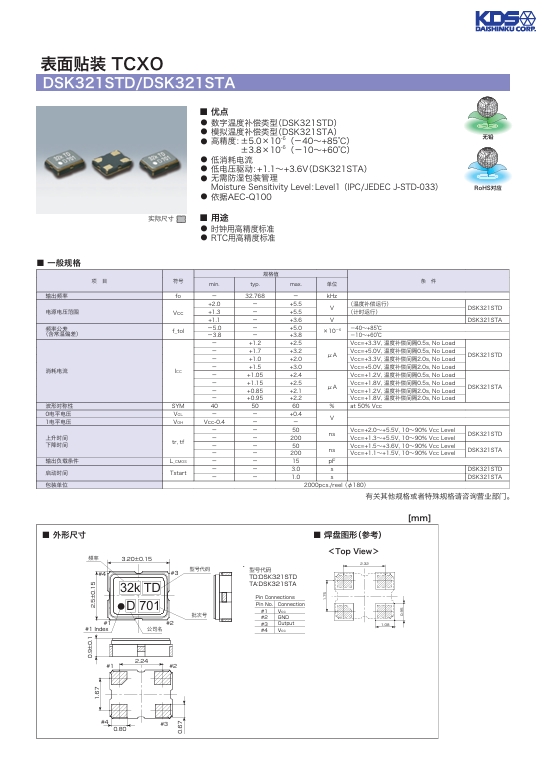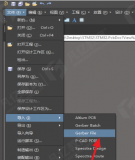01
—
std::function簡介
std::function是一個函數(shù)包裝器,該函數(shù)包裝器模板能包裝任何類型的可調用實體,如普通函數(shù),函數(shù)對象,lamda表達式等。包裝器可拷貝,移動等,并且包裝器類型僅僅依賴于調用特征,而不依賴于可調用元素自身的類型。
std::function是C++11的新特性,包含在頭文件《functional》中。一個std::function類型對象實例可以包裝下列這幾種可調用實體:函數(shù)、函數(shù)指針、成員函數(shù)、靜態(tài)函數(shù)、lamda表達式和函數(shù)對象。
std::function對象實例可被拷貝和移動,并且可以使用指定的調用特征來直接調用目標元素。當std::function對象實例未包含任何實際可調用實體時,調用該std::function對象實例將拋出std::bad_function_call異常。02
—
std::function實戰(zhàn)
std::function模板類聲明
template《class _Rp, class 。。._ArgTypes》 class _LIBCPP_TEMPLATE_VIS function《_Rp(_ArgTypes.。。)》 : public __function::__maybe_derive_from_unary_function《_Rp(_ArgTypes.。。)》, public __function::__maybe_derive_from_binary_function《_Rp(_ArgTypes.。。)》 { 。。. }std::function模板類成員函數(shù)聲明
typedef _Rp result_type; // construct/copy/destroy: _LIBCPP_INLINE_VISIBILITY function() _NOEXCEPT { } _LIBCPP_INLINE_VISIBILITY function(nullptr_t) _NOEXCEPT {} function(const function&); function(function&&) _NOEXCEPT; template《class _Fp, class = _EnableIfCallable《_Fp》》 function(_Fp); #if _LIBCPP_STD_VER 《= 14 template《class _Alloc》 _LIBCPP_INLINE_VISIBILITY function(allocator_arg_t, const _Alloc&) _NOEXCEPT {} template《class _Alloc》 _LIBCPP_INLINE_VISIBILITY function(allocator_arg_t, const _Alloc&, nullptr_t) _NOEXCEPT {} template《class _Alloc》 function(allocator_arg_t, const _Alloc&, const function&); template《class _Alloc》 function(allocator_arg_t, const _Alloc&, function&&); template《class _Fp, class _Alloc, class = _EnableIfCallable《_Fp》》 function(allocator_arg_t, const _Alloc& __a, _Fp __f); #endif function& operator=(const function&); function& operator=(function&&) _NOEXCEPT; function& operator=(nullptr_t) _NOEXCEPT; template《class _Fp, class = _EnableIfCallable《_Fp》》 function& operator=(_Fp&&); ~function(); // function modifiers: void swap(function&) _NOEXCEPT; #if _LIBCPP_STD_VER 《= 14 template《class _Fp, class _Alloc》 _LIBCPP_INLINE_VISIBILITY void assign(_Fp&& __f, const _Alloc& __a) {function(allocator_arg, __a, _VSTD::forward《_Fp》(__f)).swap(*this);} #endif // function capacity: _LIBCPP_INLINE_VISIBILITY _LIBCPP_EXPLICIT operator bool() const _NOEXCEPT { return static_cast《bool》(__f_); } // deleted overloads close possible hole in the type system template《class _R2, class.。。 _ArgTypes2》 bool operator==(const function《_R2(_ArgTypes2.。。)》&) const = delete; template《class _R2, class.。。 _ArgTypes2》 bool operator!=(const function《_R2(_ArgTypes2.。。)》&) const = delete; public: // function invocation: _Rp operator()(_ArgTypes.。。) const; #ifndef _LIBCPP_NO_RTTI // function target access: const std::type_info& target_type() const _NOEXCEPT; template 《typename _Tp》 _Tp* target() _NOEXCEPT; template 《typename _Tp》 const _Tp* target() const _NOEXCEPT; #endif // _LIBCPP_NO_RTTI從成員函數(shù)里我們知道std::function對象實例不允許進行==和!=比較操作,std::function模板類實例最終調用成員函數(shù)_Rp operator()(_ArgTypes.。。) const進而調用包裝的調用實體。1、std::function包裝函數(shù)指針定義一個std::function《int(int)》對象實例
std::function《int(int)》 callback;std::function對象實例包裝函數(shù)指針
int (*fun_ptr)(int); int fun1(int a){ return a; } int main(int argc, char *argv[]){ std::cout 《《 “Hello world” 《《 std::endl; fun_ptr = fun1; //函數(shù)指針fun_ptr指向fun1函數(shù) callback = fun_ptr; //std::function對象包裝函數(shù)指針 std::cout 《《 callback(10) 《《 std::endl; //std::function對象實例調用包裝的實體 return 0; }2、std::function包裝函數(shù)
int fun1(int a){ return a; } int main(int argc, char *argv[]){ std::cout 《《 “Hello world” 《《 std::endl; callback = fun1; //std::function包裝函數(shù) std::cout 《《 callback(42) 《《 std::endl; //std::function對象實例調用包裝的調用實體 return 0; }3、std::function包裝模板函數(shù)
template《typename T》 T fun2(T a){ return a + 2; } int main(int argc, char *argv[]){ std::cout 《《 “Hello world” 《《 std::endl; callback = fun2《int》; //std::function包裝模板函數(shù) std::cout 《《 callback(10) 《《 std::endl; //std::function對象實例調用包裝的調用實體 return 0; }4、std::function包裝函數(shù)對象
struct add{ int operator()(int x){ return x + 9; } }; int main(int argc, char *argv[]){ std::cout 《《 “Hello world” 《《 std::endl; callback = add(); //std::function包裝對象函數(shù) std::cout 《《 callback(2) 《《 std::endl; //std::function對象實例調用包裝的調用實體 return 0; }5、std::function包裝lamda表達式
int main(int argc, char *argv[]){ std::cout 《《 “Hello world” 《《 std::endl; auto fun3 = [](int a) {return a * 2;}; //lamda表達式 callback = fun3; //std::function包裝lamda表達式 std::cout 《《 callback(9) 《《 std::endl; //std::function對象實例調用包裝的調用實體 return 0; }
6、std::function包裝模板對象函數(shù)
template 《typename T》 struct sub{ T operator()(T a){ return a - 8; } }; int main(int argc, char *argv[]){ std::cout 《《 “Hello world” 《《 std::endl; callback = sub《int》(); //std::function包裝模板對象函數(shù) std::cout 《《 callback(2) 《《 std::endl; //std::function對象實例調用包裝的調用實體 return 0; }
7、std::function包裝模板對象靜態(tài)函數(shù)
template 《typename T》 struct foo2{ static T foo(T a){ return a * 4; } }; int main(int argc, char *argv[]){ std::cout 《《 “Hello world” 《《 std::endl; callback = foo2《int》::foo; //std::function包裝模板對象靜態(tài)函數(shù) std::cout 《《 callback(3) 《《 std::endl; //std::function對象實例調用包裝的調用實體 return 0; }
8、std::function包裝對象靜態(tài)函數(shù)
struct foo1{ static int foo(int a){ return a * 3; } }; int main(int argc, char *argv[]){ std::cout 《《 “Hello world” 《《 std::endl; callback = foo1::foo; //std::function包裝對象靜態(tài)函數(shù) std::cout 《《 callback(5) 《《 std::endl; //std::function對象實例調用包裝的調用實體 return 0; }
9、std::function包裝類成員函數(shù)
struct foo3{ int foo(int a){ return a * a; } }; int main(int argc, char *argv[]){ std::cout 《《 “Hello world” 《《 std::endl; foo3 test_foo1; callback = std::bind(&foo3::foo, test_foo1, std::_1); //std::function包裝類成員函數(shù) std::cout 《《 callback(9) 《《 std::endl; //std::function對象實例調用包裝的調用實體 return 0; }
這里我們用到了std::bind,C++11中std::bind函數(shù)的意義就如字面上的意思一樣,用來綁定函數(shù)調用的某些參數(shù)。std::bind的思想其實是一種延遲計算的思想,將可調用對象保存起來,然后在需要的時候再調用。而且這種綁定是非常靈活的,不論是普通函數(shù)還是函數(shù)對象還是成員函數(shù)都可以綁定,而且其參數(shù)可以支持占位符。
這里的std::_1是一個占位符,且綁定第一個參數(shù),若可調用實體有2個形參,那么綁定第二個參數(shù)的占位符是std::_2。
10、std::function包裝模板類成員函數(shù)
template 《typename T》 struct foo4{ T foo(T a){ return a * 6; } }; int main(int argc, char *argv[]){ std::cout 《《 “Hello world” 《《 std::endl; foo4《int》 test_foo2; callback = std::bind(&foo4《int》::foo, test_foo2, std::_1); //std::function包裝模板類成員函數(shù) std::cout 《《 callback(7) 《《 std::endl; //std::function對象實例調用包裝的調用實體 return 0; }
11、std::function拷貝、移動
int main(int argc, char *argv[]){ std::cout 《《 “Hello world” 《《 std::endl; std::function《int(int)》 callback2 = callback; //拷貝賦值運算符 std::cout 《《 callback2(7) 《《 std::endl; std::function《int(int)》&& callback3 = std::move(callback); //移動賦值運算符 std::cout 《《 callback3(7) 《《 std::endl; std::cout 《《 callback(7) 《《 std::endl; std::function《int(int)》 callback4(callback); //拷貝 std::cout 《《 callback4(7) 《《 std::endl; return 0; }
編輯:jq
-
STD
+關注
關注
0文章
36瀏覽量
14383
原文標題:C++ std::function詳解與實戰(zhàn)
文章出處:【微信號:harmonyos_developer,微信公眾號:harmonyos_developer】歡迎添加關注!文章轉載請注明出處。
發(fā)布評論請先 登錄
相關推薦
圖紙模板中的文本變量

基于ArkTS語言的OpenHarmony APP應用開發(fā):HelloOpenharmony
如何對MIL-STD-1553B進行選型

基于OpenHarmony標準系統(tǒng)的C++公共基礎類庫案例:SafeQueue

基于OpenHarmony標準系統(tǒng)的C++公共基礎類庫案例:SafeStack

基于OpenHarmony標準系統(tǒng)的C++公共基礎類庫案例:ThreadPoll
TSB83AA23 IEEE Std 1394b-2002數(shù)據(jù)表





 std::function簡介及模板類聲明
std::function簡介及模板類聲明













評論